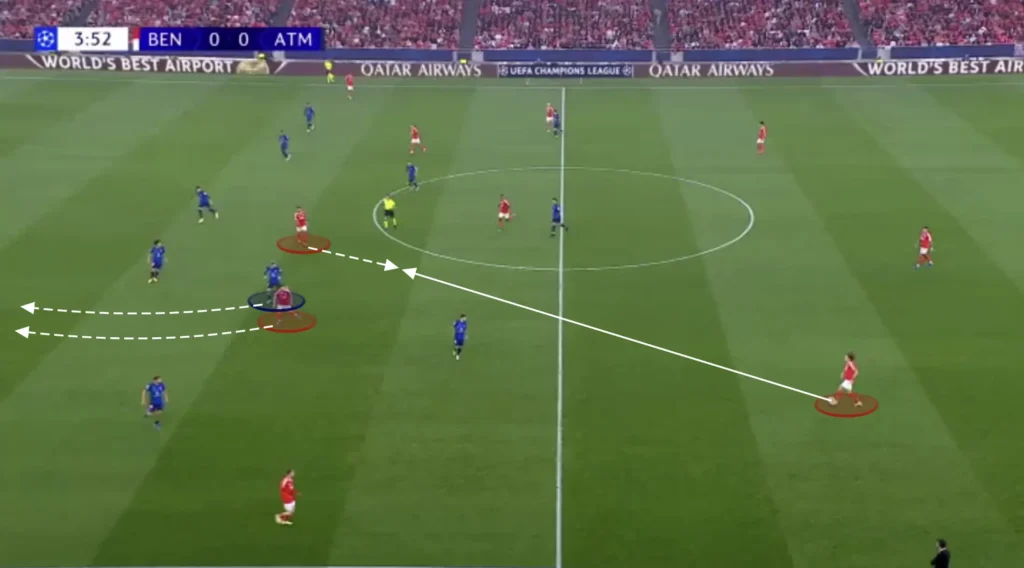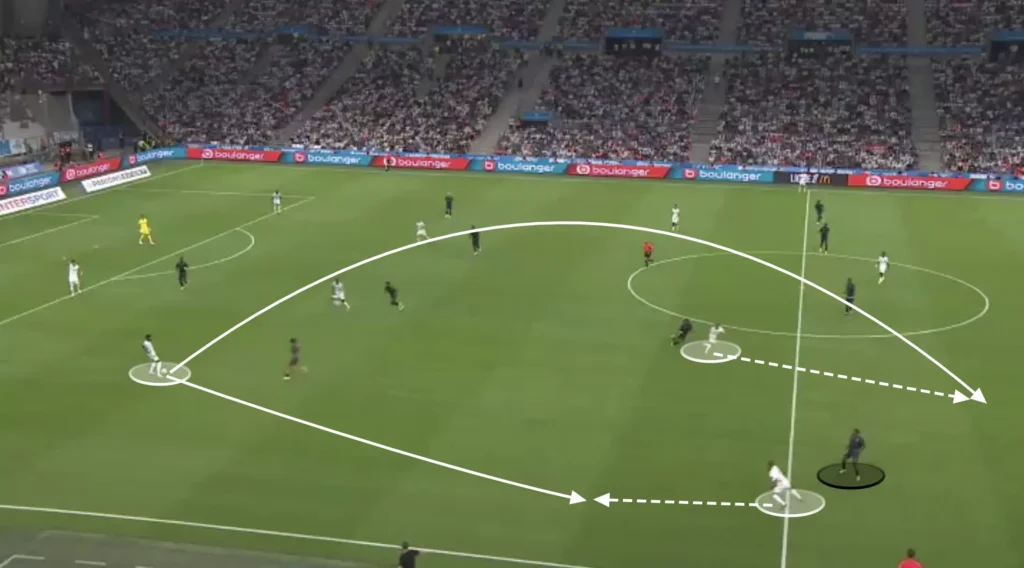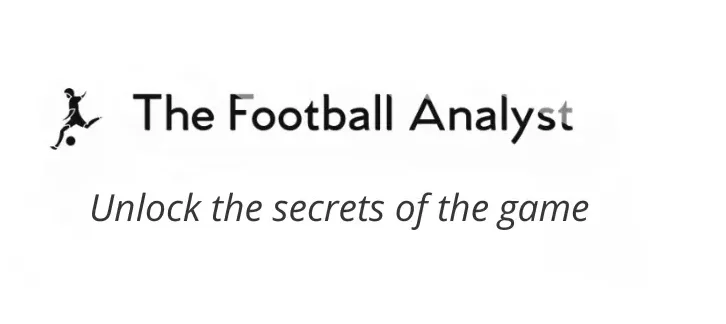Football is a game of space, timing, and movement, where actions off the ball are often just as important as those on it. Among the countless tactical concepts in modern football, one of the most impactful yet overlooked is the use of counter-movements. These deceptive runs and calculated movements are key to breaking down defenses, creating space, and giving attacking players the upper hand.
In this article, we’ll dive deep into the concept of counter-movements, explaining what they are, how they work, and why they’re crucial for modern football tactics. From their importance in disrupting defensive lines to their role in exploiting gaps, counter-movements are an art form that every coach, player, and fan should understand.
What Are Counter-Movements?
Counter-movements are off-the-ball actions designed to manipulate the positioning and behavior of the opposing team. The goal is to disrupt defensive organization, create space, and give the attacking team a tactical advantage. These movements are not about simply running toward the ball or the goal but involve calculated actions that force defenders or opponents out of their comfort zones.
Rather than moving directly into space or toward an intended target, players performing counter-movements make deliberate actions that appear to have one purpose but are actually intended to achieve another. For example, a player might move toward an area that seems less dangerous, pulling a defender along, only to free up valuable space elsewhere for their team to exploit.
Counter-movements can take place in any area of the pitch, not just in the attacking third. In midfield, they can help create passing lanes, while in defensive situations, they might involve repositioning to cut off dangerous passes or block potential threats. The essence of counter-movements lies in creating confusion, forcing split-second decisions from opponents, and ultimately exploiting the resulting gaps or mismatches.
These subtle but highly effective tactical actions are a fundamental part of modern football, emphasizing the importance of intelligence and coordination alongside technical ability. Whether it’s a single player or an entire unit making coordinated counter-movements, these actions play a key role in breaking down structured defensive setups and creating attacking opportunities.
The Different Types of Counter-Movements
Counter-movements come in various forms, each serving a specific purpose depending on the situation and the team’s tactical setup. Here are some of the most common and effective types:
1. Decoy Runs
A decoy run is a deceptive movement where a player makes a run to pull a defender out of position, creating space for a teammate to exploit.
- Example: A midfielder makes a run in behind the opposition backline, dragging away an opposition midfielder, opening the space for the striker to drop into.

- When to Use: Decoy runs are especially useful when facing a compact defense, as they can stretch the defensive line and create gaps.
2. Drop-and-Sprint Movements
In this scenario, an attacker drops deeper as if to receive the ball at their feet, baiting their marker to step forward. Once the defender commits, the attacker quickly sprints into the space behind them.
- Example: A striker like Kylian Mbappé may drop toward midfield to lure a defender forward, only to accelerate past them into a dangerous goal-scoring position. Vinícius Júnior also did this to score a goal against Bayern Munich in the 2023/2024 Champions League season:


- Why It Works: This exploits defenders’ natural instincts to follow their man, leaving space behind them.
3. Opposite Runs
Two players make contrasting movements to confuse defenders and create space. One attacker moves away from the ball, dragging their marker, while the other moves into the vacated area to receive a pass.
- Example: A winger drops deeper while a midfielder makes a run in behind, forcing the opposition fullback to decide who to track.

- When It’s Effective: Opposite runs are highly effective against man-marking systems, where defenders can be easily dragged out of position.
4. Crisscross Patterns
In crisscross patterns, attackers make diagonal or crossing runs to confuse defenders marking them. This is often used in set-pieces or during counterattacks.
- Example: Two players make crossing runs at a corner, creating confusion and hesitation in the defense.

- Why It’s Important: These movements can overwhelm defenders, making it difficult for them to track their assignments.
Why Are Counter-Movements So Effective?
The beauty of counter-movements lies in their ability to create chaos for defenders. Here are some key reasons why they’re so impactful:
1. Create Space
By drawing defenders out of their positions, counter-movements open up valuable spaces in key areas. This is especially useful against low-block defenses, where breaking through requires disrupting their compact structure.
2. Disrupt Defensive Organization
Well-organized defenses rely on structure and communication. Counter-movements force defenders to make decisions on the fly, increasing the chances of mistakes or miscommunication.
3. Exploit Marking Systems
Counter-movements are particularly effective against man-marking systems, as they force defenders to chase players into uncomfortable positions. Even zonal marking systems can struggle, as players move into unexpected areas that defenders aren’t prepared to cover.
4. Enhance Attacking Options
Teams that use counter-movements effectively create more passing options for the ball carrier. With defenders distracted or out of position, attackers can receive the ball in dangerous areas.
How to Coach Counter-Movements
Counter-movements require precision, timing, and understanding among players. Here are some tips for coaching them effectively:
- Small-Sided Drills
Use small-sided games to replicate match situations where players must make quick decisions and coordinated movements. - Positioning and Timing Training
Teach players when to make their movements and how to recognize opportunities to drag defenders. - Video Analysis
Show players examples of effective counter-movements from professional matches to help them visualize the concept and understand its importance. - Set-Piece Practice
Counter-movements are particularly effective during set-pieces. Practice routines where attackers crisscross, swap positions, or make decoy runs to create space.
Conclusion
Counter-movements are an essential part of modern football, turning simple off-the-ball runs into game-changing actions. By deceiving defenders and creating space, these movements disrupt even the most well-drilled defensive setups and open up attacking opportunities.
Whether it’s a subtle decoy run or a perfectly timed drop-and-sprint, counter-movements give players the ability to outsmart their opponents and make the difference in tight matches. For coaches, mastering these tactics can elevate a team’s attacking play, while fans who recognize them will gain a deeper appreciation for the intricacies of the game.
